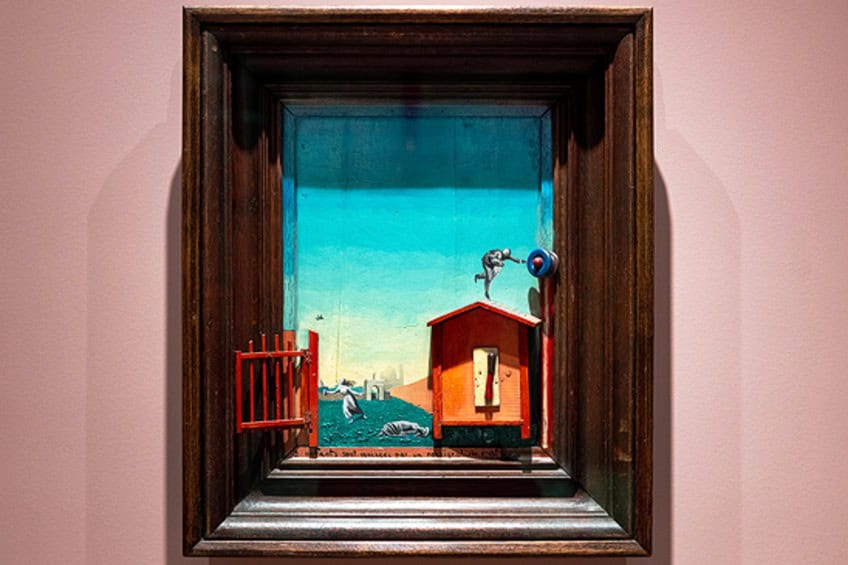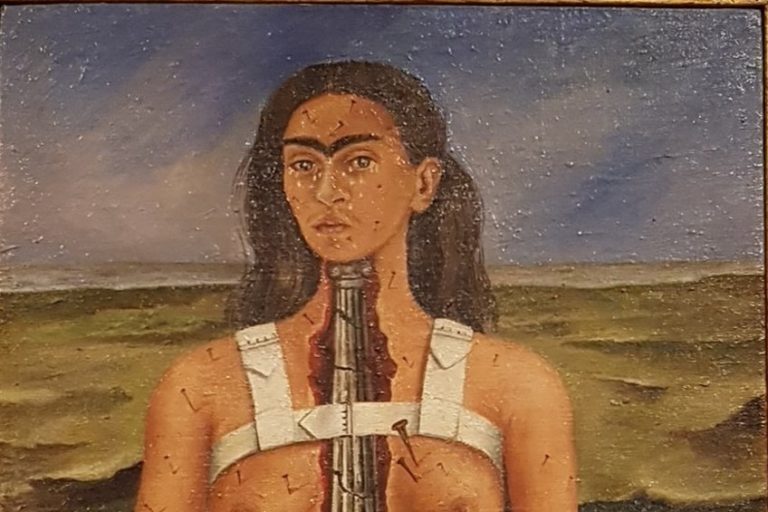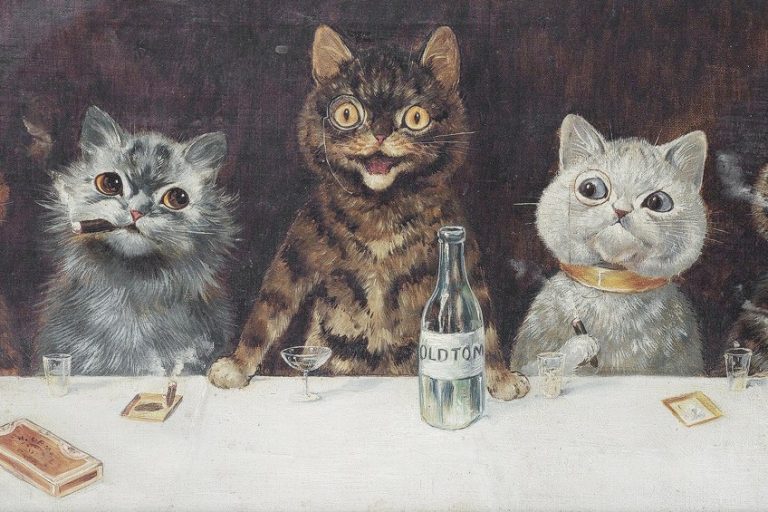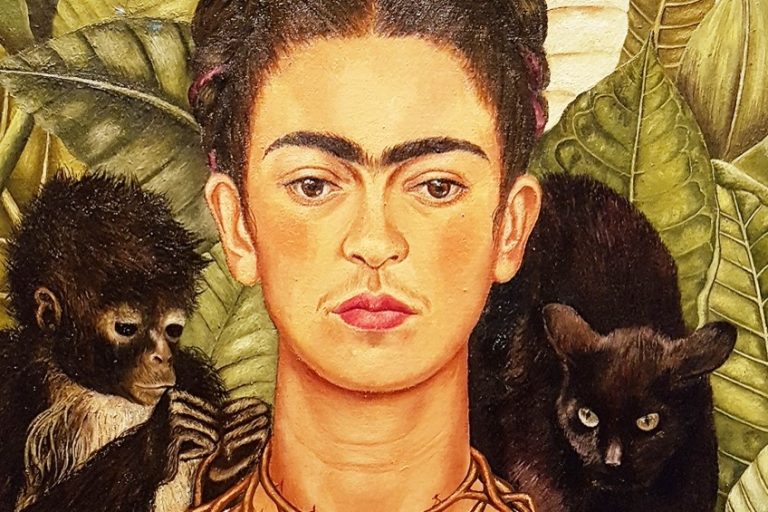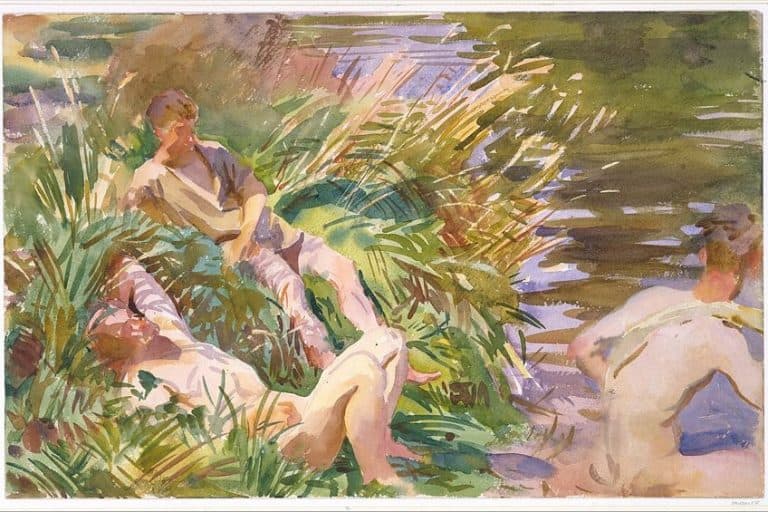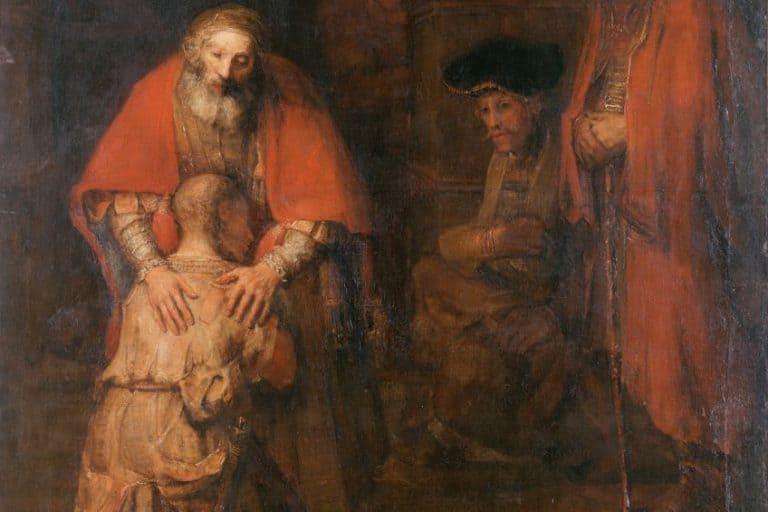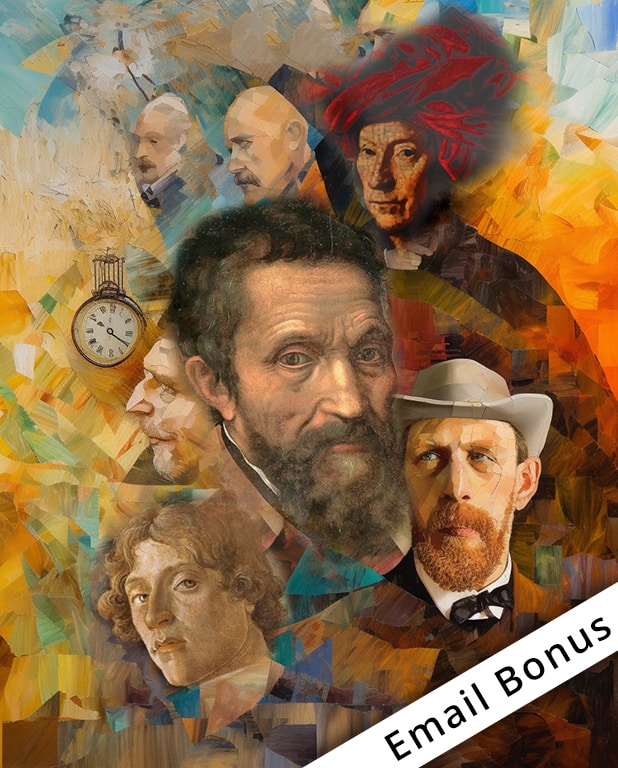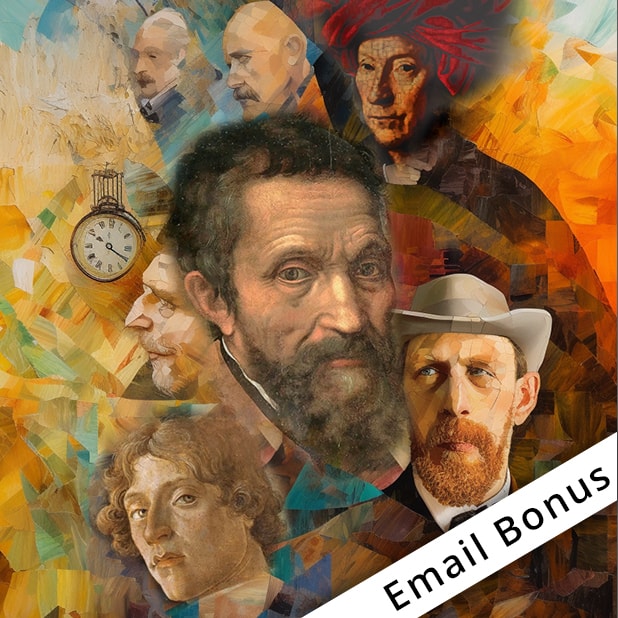“Two Children are Threatened by a Nightingale” by Max Ernst – Art
Max Ernst’s Two Children are Threatened by a Nightingale, created in 1924, stands as a seminal piece within the Surrealist movement, showcasing the artist’s pioneering use of dreamlike imagery and innovative techniques. This mixed-media work combines a painted panel with three-dimensional elements, including a miniature gate, a red house, and a wooden ledge, creating a hauntingly whimsical tableau. Ernst’s composition juxtaposes the innocence of childhood with the surreal and menacing presence of the nightingale, a motif drawn from the artist’s own hallucinations and subconscious fears. This artwork exemplifies Ernst’s ability to blend reality and fantasy, challenging viewers to navigate the boundaries between the two realms.
Key Takeaways
- Max Ernst created Two Children are Threatened by a Nightingale in 1924.
- The painting combines oil, wood, and printed paper to evoke surrealist themes.
- It is housed in The Museum of Modern Art in New York City.
Historical Context and Max Ernst’s Background
| Artist | Max Ernst (1891 – 1976) |
|---|---|
| Date Created | 1924 |
| Medium | Oil with painted wood elements and cut-and-pasted printed paper on wood |
| Genre | Surrealism |
| Period/Movement | Surrealism |
| Dimensions (cm) | 69.8 x 57.1 |
| Series/Versions | N/A |
| Where Is It Housed? | The Museum of Modern Art, New York City, United States |
| What It Is Worth | Estimated value not publicly disclosed |
Max Ernst’s Two Children are Threatened by a Nightingale, created in 1924, is one of the most intriguing works in surrealist art. The painting encapsulates the unique and dreamlike qualities of the Surrealist movement. Through its combination of oil paint, wood elements, and cut-and-pasted paper, this piece offers a fascinating glimpse into Ernst’s artistic innovation.
Max Ernst was a key figure in both the Dada and Surrealist movements.

He crafted Two Children are Threatened by a Nightingale to exemplify these styles. In this piece, he masterfully mixes the real and the imagined, creating a blend that evokes deep, irrational fears within a dreamlike setting. The painting stands out in Ernst’s body of work, highlighting his adept use of different materials and techniques. This artwork is now part of The Museum of Modern Art’s collection in New York. It continues to captivate audiences with its mysterious narrative and intricate design.
Influence of the Dada Movement
The Dada movement began during the First World War in Zurich, Switzerland. It emerged as a reaction against the war’s brutality and the societal norms that allowed it. Max Ernst was heavily influenced by this movement, embracing its anti-art stance and the idea of art as a means of protest. Ernst, living in Germany at the time, connected with Dadaists in Cologne and Berlin. These encounters profoundly influenced his artistic development.
Dada’s emphasis on absurdity, chance, and irrationality resonated deeply with him, setting a foundation for his later work.
Surrealism and the Unconscious
Surrealism emerged in the early 1920s in Paris, with a focus on the unconscious mind, dreams, and the irrational. This movement built upon Freud’s theories of the unconscious, emphasizing free association and dream imagery. Ernst became a central figure in this movement, bringing ideas from Dada into Surrealism.

Two Children are Threatened by a Nightingale exemplifies Surrealism’s fascination with dream logic and the unconscious. The painting’s bizarre imagery and dream-like scenario reflect Ernst’s interest in the mysteries of the human mind.
Ernst’s Life and Works Pre-1924
Max Ernst was born in 1891 in Germany. His early life saw several formative experiences, including an intense fascination with art and literature. Ernst’s studies in philosophy and his experiences during the First World War deeply affected him. These experiences fueled his disdain for conventional norms, pushing him towards avant-garde movements. Before 1924, Ernst experimented with various styles and techniques. His involvement with Dada led him to explore collage and mixed media.
Ernst often combined elements from different sources, creating works that challenged traditional art forms and reflected his evolving artistic vision.
Detailed Analysis of the Painting
Two Children are Threatened by a Nightingale by Max Ernst is a fascinating work that seamlessly blends dreamlike imagery with complex symbolism. The painting combines oil, wood, and collage elements to create a surreal composition that invites in-depth analysis.
Subject Matter
In this painting, Max Ernst depicts an eerie scene where two children appear threatened by a seemingly harmless nightingale. The children are positioned in a green field while a Roman arch looms behind them, adding a mysterious element to the setting. One child holds a knife, suggesting an instinct to defend against the bird. Another child reaches out from a rooftop, further heightening the sense of drama and tension within the scene.

Symbolism and Themes
Ernst uses the nightingale as a symbol to conjure irrational fear. In the world of dreams, even small, innocuous creatures like a nightingale can become sources of terror. The painting explores themes of childhood anxiety, hidden fears, and the blurred lines between reality and imagination.
The knife held by one of the children could symbolize a desperate need for protection against unseen psychological threats.
Technique and Composition
Ernst’s technique includes a combination of oil paint, wood elements, and collage. These disparate objects create a multi-textured surface, adding layers of meaning. The juxtaposition of painted and real elements disrupts the viewer’s sense of reality, echoing the surrealist aim to merge dream with reality. The composition is carefully structured; the placement of figures and objects guides the viewer’s eye effectively across the scene.
Use of Color and Perspective
The use of color in the painting is strategic and significant. The green field contrasts with the more subdued colors of the children’s clothing and the nightingale, making the landscape appear dreamlike. Ernst employs linear perspective with the Roman arch to create a sense of depth. Atmospheric perspective is also used, with objects appearing hazier in the background, enhancing the surreal effect.
This multifaceted approach to color and perspective contributes to the painting’s uncanny atmosphere, drawing the viewer into its unsettling yet captivating world.
Cultural and Artistic Significance
Two Children are Threatened by a Nightingale by Max Ernst holds a prominent place in modern art history. It exemplifies surrealism, blending dreamlike elements with a complex narrative.
Impact on Modern Art
Max Ernst’s work is notable for its innovative use of mixed media, combining oil, painted wood, and cut-and-pasted paper. This approach was revolutionary at the time and helped to push the boundaries of artistic expression. The piece is a hallmark of the Surrealist movement, which sought to unlock the subconscious.

The surreal and disturbing imagery—a nightingale threatening two children—captures irrational fears, blending violence and innocence. Ernst’s fascination with dreams and unconscious desires is evident in this work, influencing countless artists in the Surrealist genre.
Reception and Legacy
When Two Children are Threatened by a Nightingale was unveiled in 1924, it gained immediate attention for its unique and troubling narrative. Critics and audiences alike were drawn to its eerie, dreamlike quality. Housed in The Museum of Modern Art in New York, the piece continues to attract interest from art enthusiasts and scholars. Its intricate details and haunting imagery invite endless interpretations and discussions. The painting has sparked debates over its possible erotic and violent meanings.
Ernst’s alter ego, Loplop, often explored complex psychological landscapes, adding layers of meaning to this work.
Exhibition History and Current Location
Two Children are Threatened by a Nightingale is a well-known work by Max Ernst, showcasing his unique style and techniques. The piece has been displayed in several prestigious institutions, gaining widespread interest from both art enthusiasts and scholars.
Legacy of Two Children are Threatened by a Nightingale Today
Since its creation in 1924, it has been part of numerous exhibitions that highlight the Surrealist movement. Interest in Ernst’s work has led to several displays in important institutions. The work’s unique blend of materials and techniques continues to captivate audiences. Housed permanently at MoMA, it remains a focal point for visitors.
Max Ernst’s Two Children are Threatened by a Nightingale remains a profound testament to the Surrealist movement’s exploration of the subconscious and the uncanny. Through his innovative blend of materials and haunting imagery, Ernst invites viewers into a realm where dreams and fears converge, challenging conventional interpretations of reality. This artwork not only reflects Ernst’s personal struggles and imaginative visions but also continues to captivate audiences with its enigmatic narrative and emotive power, solidifying its place as a pivotal work in the history of Surrealism.
Frequently Asked Questions
What Artistic Period Is Two Children are Threatened by a Nightingale Associated With?
Two Children are Threatened by a Nightingale is associated with the Surrealist movement. This movement started in the early 20th century and sought to unlock the creative potential of the unconscious mind. Ernst’s work, created in 1924, fits well within the Surrealist exploration of dream-like scenes and irrational thoughts.
How Did Max Ernst’s Surrealist Techniques Manifest in Two Children are Threatened by a Nightingale?
Max Ernst employed various surrealist techniques in this painting. He combined oil paint with painted wood elements and cut-and-pasted printed paper. The assemblage of these materials creates a three-dimensional effect, blending 2D and 3D elements to evoke a dreamlike and unsettling atmosphere.
In What Ways Does Max Ernst’s Artwork Differ from Traditional Interpretations of Nightingale Symbolism?
Traditional interpretations of the nightingale often symbolize beauty, love, and poetry. Ernst’s work turns this on its head by presenting the nightingale as a source of fear. This shift reflects the Surrealist tendency to subvert common symbols, drawing on emotions like panic and irrational fear, rather than beauty and romance.
What Notable Techniques Did Max Ernst Employ in Two Children are Threatened by a Nightingale?
Max Ernst is well-known for his innovative use of materials. In this work, he used oil paint alongside painted wood elements and cut-and-pasted paper. These elements, combined in a wooden frame, create a physical relief that stands out from the flat surface, enhancing the surreal and dramatic effect of the scene.
Isabella studied at the University of Cape Town in South Africa and graduated with a Bachelor of Arts majoring in English Literature & Language and Psychology. Throughout her undergraduate years, she took Art History as an additional subject and absolutely loved it. Building on from her art history knowledge that began in high school, art has always been a particular area of fascination for her. From learning about artworks previously unknown to her, or sharpening her existing understanding of specific works, the ability to continue learning within this interesting sphere excites her greatly.
Her focal points of interest in art history encompass profiling specific artists and art movements, as it is these areas where she is able to really dig deep into the rich narrative of the art world. Additionally, she particularly enjoys exploring the different artistic styles of the 20th century, as well as the important impact that female artists have had on the development of art history.
Learn more about Isabella Meyer and the Art in Context Team.
Cite this Article
Isabella, Meyer, ““Two Children are Threatened by a Nightingale” by Max Ernst – Art.” Art in Context. July 17, 2024. URL: https://artincontext.org/two-children-are-threatened-by-a-nightingale-by-max-ernst/
Meyer, I. (2024, 17 July). “Two Children are Threatened by a Nightingale” by Max Ernst – Art. Art in Context. https://artincontext.org/two-children-are-threatened-by-a-nightingale-by-max-ernst/
Meyer, Isabella. ““Two Children are Threatened by a Nightingale” by Max Ernst – Art.” Art in Context, July 17, 2024. https://artincontext.org/two-children-are-threatened-by-a-nightingale-by-max-ernst/.


